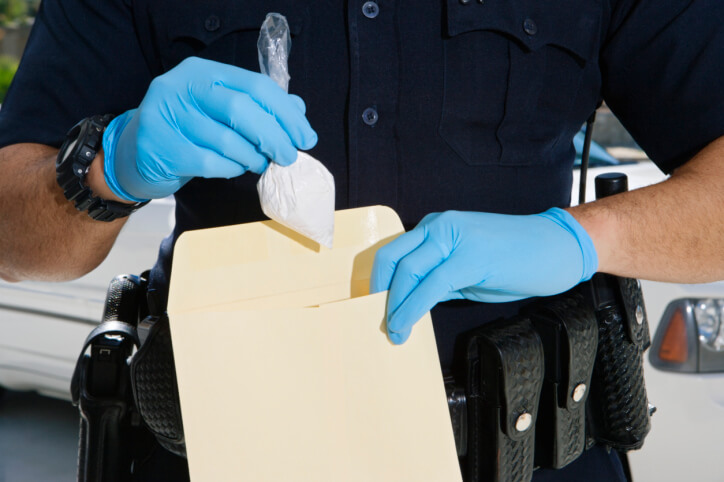
Handling Crime Evidence
Preliminary Steps
Handling crime evidence should be a methodical process. An investigator first interviews the suspects, witnesses and victims as well as any law enforcement officials or first responders who arrived on the scene. Once the investigator gathers enough preliminary information, a plan is formulated to keep crime evidence safe. While collecting hazardous biological crime evidence, an investigator should always wear protective gloves, masks, eyewear or clothing.
Documentation Process
The examiner will first walk along the area where the crime happened. Any points of interest with evidence will be marked. The investigator should document the entire evidence collection process. Written notes, photographs, hand-drawn sketches, videotaping and computer programs can all help illustrate a crime scene. An investigator may use two or more of these documentation methods.
Most police departments require written notes and color photographs of the crime scene. Photos show more detail of smaller evidence items. In addition, the investigator can draw a sketch to illustrate aspects of crime scene that aren’t clear from a photo. To see patterns, the examiner can also use video camera. An investigator can see blood stain patterns to determine the cause of death. Alternatively, the investigator can use a specialized computer program; after entering some data, the software will create a custom sketch of the crime scene and blood splatters.
Finally, the chain of custody form lists all the individuals who had custody of the crime evidence. The form contains a description of the evidence and its packaging, the location it was found; case number; date and time; and the people who collected and had access to it. This form is designed to prevent crime evidence tampering.
Gathering Biological Evidence
All biological evidence should be clearly tagged, marked and packaged. All individual evidence items should be packaged separately to avoid cross-contamination. Biological evidence is sensitive material and should be stored in a cold place. Normally, it is sent to lab within 48 hours for analysis. Common biological evidences include: blood, semen, hair and fingerprints.
Wet or dried blood samples can be transported in a variety ways. The investigator can package small items in plastic bags or a paper envelope. For larger items, the examiner can remove a piece of the object. He or she can also scrape the blood into an envelope or absorb wet/dried blood with threads/cotton squares. To avoid dilution, the investigator should not add water to dried blood stains.
For other biological liquids, it is general practice to let the stain air dry, then package the item or sample material in paper. For human hair, it should be picked with tweezers and stored. Hair lodged in an object should be left in, and the entire object should be taken as evidence. Regarding fingerprints, the examiner often finds them on glass, metal, paper or other shiny surfaces. An investigator should wear gloves or use a cloth to avoid adding new fingerprints, but should also be careful not to wipe away any crime evidence.